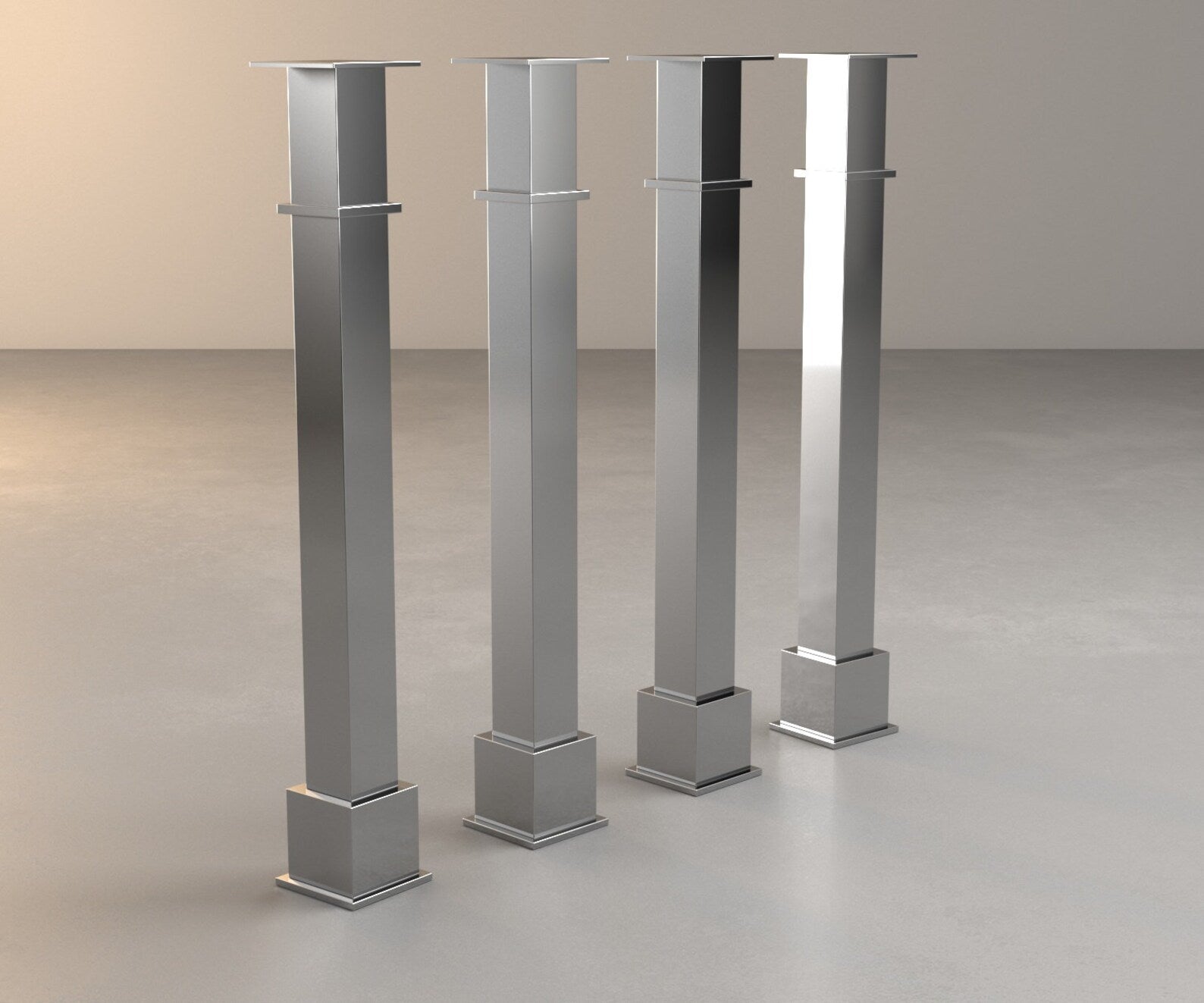Discover Affordable and Chic Solutions in Legs For Kitchen Island Updates
Wiki Article
Important Aspects to Take Into Consideration When Selecting Legs For Kitchen Island
Selecting the ideal legs for a kitchen island includes a careful assessment of multiple aspects that can significantly affect both capability and aesthetic charm. As we discover these elements, it ends up being clear that each choice can have far-reaching ramifications for the total kitchen experience.Material Options
When choosing legs for a cooking area island, understanding the different product alternatives is important for accomplishing both visual appeal and structural stability (Legs For Kitchen Island). The selection of product significantly influences not only the toughness of the island yet also its overall style and performanceMetal legs, often made from stainless steel or wrought iron, add a commercial and contemporary feel while ensuring resilience and stability. These products are immune to use and can support substantial weight, making them ideal for bigger islands.
An additional choice is engineered materials, like MDF or plywood, which can be more cost-effective while still supplying a variety of surfaces. They might not offer the same degree of stability as solid timber or metal. Legs For Kitchen Island. Lastly, products such as acrylic or glass can produce a contemporary appearance, though they may call for extra support to make certain security.
Ultimately, the choice of material for cooking area island legs ought to straighten with the preferred functionality and the total theme of the kitchen.
Style and Layout

When considering style, the shape and finish of the legs are crucial. Tapered legs can offer a sense of lightness and elegance, while thicker, more robust legs can share toughness and security. Furthermore, the surface-- be it painted, stained, or natural-- need to enhance the kitchen cabinetry and kitchen counter materials to create a unified look.
Moreover, the layout of the legs can additionally show personal preference. Personalized or ornamental legs, such as those featuring intricate makings or one-of-a-kind geometric forms, can act as prime focus, including character and personality to the cooking area. Eventually, the best choice will certainly not just enhance capability however also boost the visual appeal, making the cooking area island a standout function of the home.
Height Factors To Consider
Selecting the appropriate elevation for cooking area island legs is important, as it straight impacts both capability and comfort. The common height for a cooking area island generally varies from 36 to 42 inches, straightening with common kitchen counter heights.
It is also important to represent individuals' elevations and preferences. Tailoring the elevation can ensure a comfortable experience for all member of the family, making the kitchen island an extra practical and pleasurable room.
Weight Support
Making certain appropriate weight support for kitchen area island legs is vital for both security and functionality. The cooking area island commonly serves several objectives, including food prep work, dining, and extra storage space, requiring a durable support structure. When picking legs, it is essential to take into consideration the overall weight capability called for based on the island's meant usage and the materials that will be positioned on it.The choice of material for the legs plays a substantial role in their weight-bearing abilities. Strong wood, metal, and durable compounds generally offer premium strength compared to lighter materials. In addition, the design of the legs-- whether they are straight, tapered, or have a pedestal type-- can affect their capacity to disperse weight effectively across the framework.
Always consult the producer's specifications regarding load restrictions to ensure that the legs can maintain the desired weight without jeopardizing security. In summary, selecting cooking area island legs with ample weight assistance is vital for producing a safe and functional culinary room.
Installment and Maintenance
Proper installment and upkeep of kitchen area island legs are crucial for ensuring long life and stability. To begin, it is crucial to adhere to the manufacturer's standards throughout installation. try this website This usually entails protecting the legs to the space station utilizing appropriate bolts, making certain that the legs are level and aligned. Making use of a level device can help protect against tottering and enhance the general aesthetic charm of the kitchen island.Once set up, normal maintenance is needed to preserve the stability and look of the legs - Legs For Kitchen Island. For wooden legs, regular cleansing with a damp fabric and application of ideal wood polish can stop dampness damage and preserve their coating. Metal legs may need a mild cleaning service to eliminate oil and grime, complied with by a completely dry towel to stop rust development
In addition, inspect the legs frequently for indications of wear or damages, such as splits or loosened joints. Tightening up screws or screws as required can additionally lengthen the life-span of the legs. By sticking to these installment and upkeep techniques, home owners can make certain that their cooking area island continues to be tough and aesthetically appealing for several years ahead.
Verdict

Aesthetic comprehensibility is extremely important in picking the straight from the source style and design of legs for a kitchen area island, as these aspects substantially affect the overall ambiance of the space. Tapered legs can offer a feeling of agility and sophistication, while thicker, extra durable legs can share strength and security.Choosing the appropriate height for kitchen island legs is essential, as it directly impacts both functionality and comfort. In summary, selecting kitchen island legs with adequate weight support is important for creating a safe and functional cooking room.
In verdict, picking legs for a kitchen area island demands mindful factor to consider of different aspects, consisting of material options, style, elevation, weight assistance, and setup.
Report this wiki page